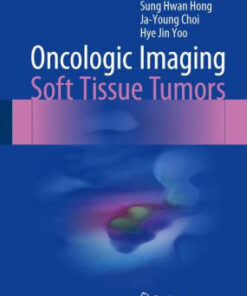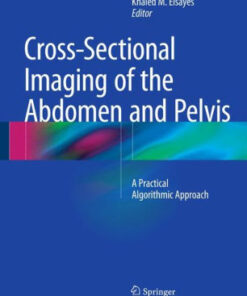(PDF) Oncologic Imaging – Spine and Spinal Cord Tumors by Heung Sik Kang
$18.00
Download instantly Oncologic Imaging – Spine and Spinal Cord Tumors by Heung Sik Kang, Joon Woo Lee, Eugene Lee. It is ebook in PDF format.
ISBN-10: 9812876995 ISBN-13: 9789812876997
Preview
This is the PDF eBook version for Oncologic Imaging – Spine and Spinal Cord Tumors by Heung Sik Kang, Joon Woo Lee, Eugene Lee
Table of Contents
I. Warm-up: Basic Concepts.- 1. Compartmental approach to spinal tumors.- 1) Intraosseous / extradural / intraduralextramedullary / intramedullary.- 2) Extradural versus intradural tumors.- 3) Intraduralextramedullary versus intramedullary tumors.- 2. Histologic basis of imaging appearances for spinal tumors.- 1) Tumors with fatty component.- 2) Red marrow component.- 3) Tumors with vascular component.- 4) High-cellularity tumors.- 5) Tumors with hemorrhagic component.- 6) Tumors with myxoid component.- 7) Tumors with calcification/ossification.- 8) Tumors with cystic degeneration/necrosis.- 9) Slow growing tumors.- 10) Locally aggressive tumors.- 11) Small round cell tumors.- II. Training: Tumor details.- 1. Bone tumors.- 1) Benign bone tumors.- 2) Malignant bone tumors.- 3) Bone tumor mimics.- 2. Extradural non-osseous tumors.- 1) Benign extradural tumors.- 2) Malignant extradural tumors.- 3) Extradural tumor mimics.- 3. Intraduralextramedullary tumors.- 1) Benign intraduralextramedullary tumors.- 2) Malignant intraduralextramedullary tumors.- 3) Intradural tumor mimics.- 4. Intramedullary tumors.- 1) Benign intramedullary tumors.- 2) Malignant intramedullary tumors.- 3) Intramedullary tumor mimics.- III. Practice: Tips for the correct diagnosis.- 1. Bone tumors.- 1) Incidence-based approach for spinal bone tumors.- 2) Age-based approach for spinal bone tumors.- 3) Location based approach for spinal bone tumors.- 4) Imaging pattern based approach for spinal bone tumors.- (1) Benign appearing osseous lesions.- (2) Sclerotic lesions of the vertebra.- (3) Multi-compartmental lesions.- (4) Relation with cortex.- (5)Common tumors with diffuse spine involvement.- 2. Extradural tumors.- 1) Incidence-based approach for extradural tumors.- 2) Age-based approach for extradural tumors.- 3) Location based approach for extradural tumors.- 4) Imaging pattern based approach for extradural tumors.- (1) Cystic tumors.- (2) Tumors with lobular contours.- (3) Tumors with hemorrhage.- (4) Different enhancement patterns,- 5)Tumors versus Herniated disc.- 3. Intraduralextramedullary (IDEM) tumors.- 1) Incidence-based approach for IDEM tumors.- 2) Age-based approach for IDEM tumors.- 3) Location based approach for IDEM tumors.- 4) Imaging pattern based approach for IDEM tumors.- (1) Tumors with high-cellularity.- (2) Tumors with intra-lesional calcifications.- (3) Hypervascular tumors with AV shunt or superficial siderosis.- (4) Tumors near conusmedullaris or caudaequina.- (5) Multiple IDEM tumors.- 4. Intramedullary (IM) tumors.- 1) Incidence-based approach of IM tumors.- 2) Age-based approach for IM tumors.- 3) Location based approach for IM tumors.- 4) Imaging pattern based approach for IM tumors.- (1) Tumors with cystic change.- (2) Tumors with hemorrhage.- (3) Tumors with surrounding extensive cord edema.- (4) Multiple IM tumors.- 5) IM tumors versus non-tumorous myelopathy.- 5. Infant/childhood spinal tumors.- 1) Bone tumors.- 2) Intraduralextramedullary tumors.- 3) Intramedullary tumors.- 4) Relation with other syndromes.




